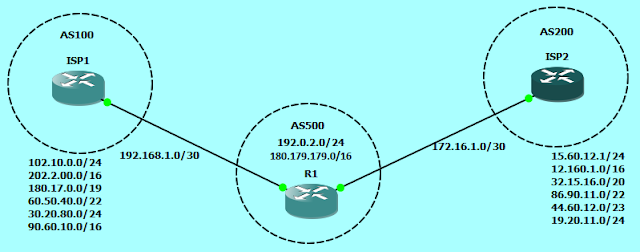OSPF Neighbor States
When OSPF adjacency is formed, a router goes through several state changes before it becomes fully adjacent with its neighbor. Those states are defined below:
Down
Attempt
2-Way
Exchange
Loading
Down
- This is the first OSPF neighbor state.
- It means that no hellos have been received from this neighbor, but hello packets can still be sent to the neighbor in this state.
Attempt
- This state is only valid for manually configured neighbors in an NBMA environment.
- In Attempt state, the router sends unicast hello packets every poll interval to the neighbor, from which hellos have not been received within the dead interval.
- This state specifies that the router has received a hello packet from its neighbor, but the receiving router's ID was not included in the hello packet.
- When a router receives a hello packet from a neighbor, it should list the sender's router ID in its hello packet as an acknowledgment that it received a valid hello packet.
2-Way
- This state designates that bi-directional communication has been established between two routers. Bi-directional means that each router has seen the other's hello packet.
- This state is attained when the router receiving the hello packet sees its own Router ID within the received hello packet's neighbor field.
- At the end of this stage, the DR and BDR for broadcast and non-broadcast multiacess networks are elected.
- In this state, the routers establish a master-slave relationship and choose the initial sequence number for adjacency formation.
- The router with the higher router ID becomes the master and starts the exchange.
- Master is the only router that can increment the sequence number of DBD packets in next stage.
Exchange
- In the exchange state, OSPF routers exchange database descriptor (DBD) packets.
- Master initiates the exchange of DBD packets, which are explicitly acknowledged by slave.
- Database descriptors contain link-state advertisement (LSA) headers only and describe the contents of the entire link-state database.
- The contents of the DBD received are compared to the information contained in the routers link-state database to check if new or more current link-state information is available with the neighbor.
Loading
- In this state, the actual exchange of link state information occurs.
- Based on the information provided by the DBDs, routers send link-state request packets. The neighbor then provides the requested link-state information in link-state update packets.
Full
- In this state, routers are fully adjacent with each other. All the router and network LSAs are exchanged and the routers' databases are fully synchronized.




Comments
Post a Comment